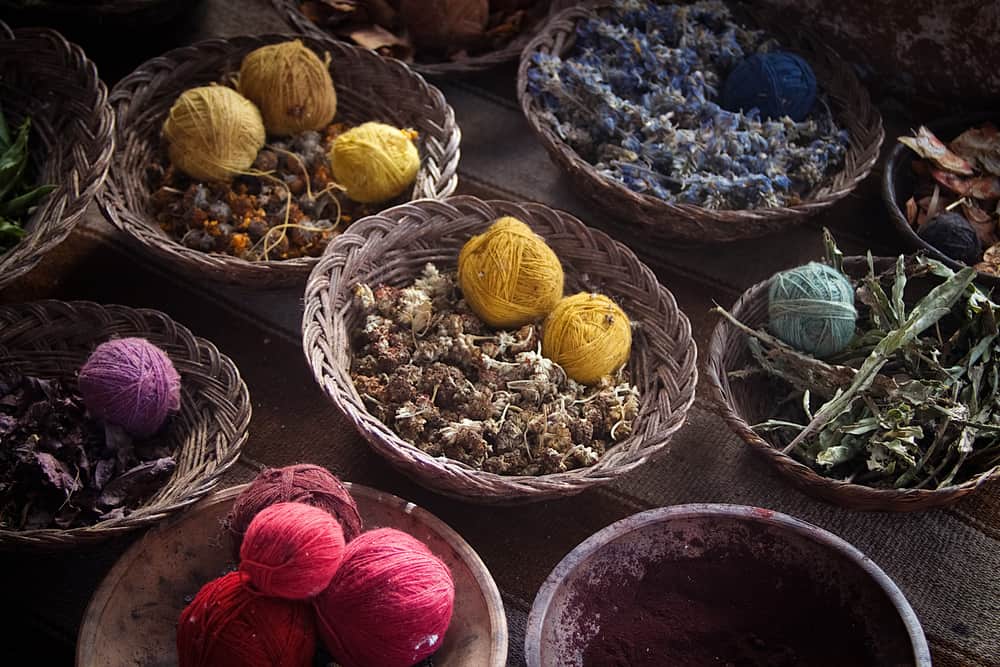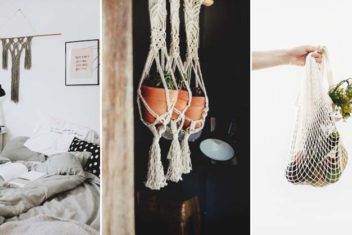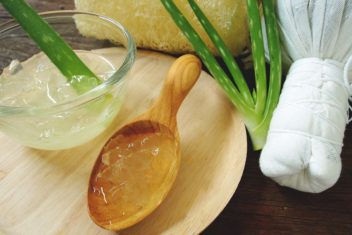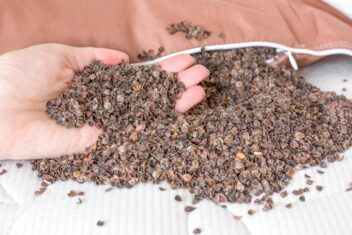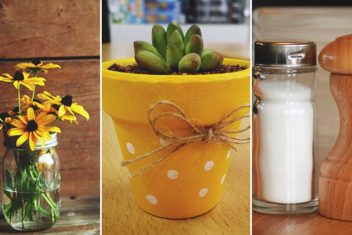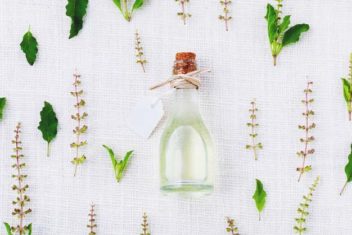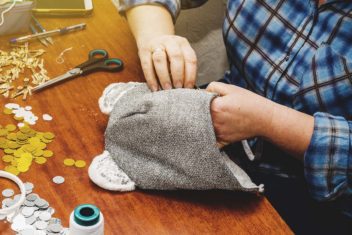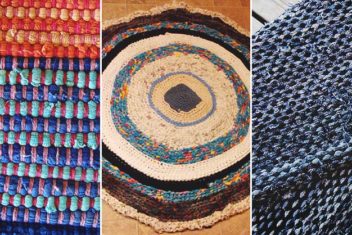You don’t have to rely on chemicals to color your textiles when you can simply head out your back door to forage for yarn dye.
People have been dyeing yarn and cloth with plants for thousands of years. In fact, it’s only been in the past couple of centuries that chemical dyes have become more common than plant-based ones. Many cultures around the world still use plants as their primary dye sources, creating hues from various plant parts and mordants available to them.
Below are 40 common plants you can forage to dye yarn. They will of course vary depending on where you’re located, but chances are there will be at least a dozen of these different species somewhere in your area.
How to Use Plants for Dye
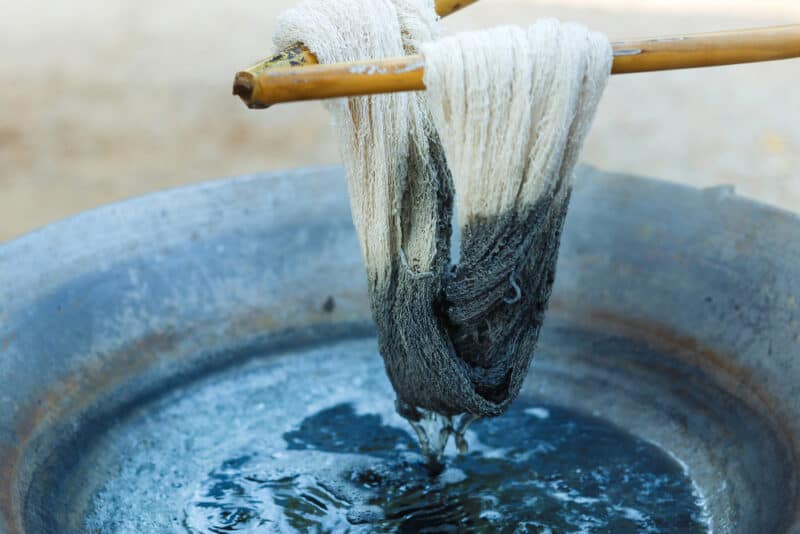
To create a dye from plant parts, you have to create a dyebath. In simplest terms, this means boiling an abundant amount of plant stuff in water to draw out the pigment it contains.
This can take anywhere from 40 minutes to a few hours, depending on which plant parts you’re using. Delicate aerial parts like blossoms and leaves take less time, while bark and roots take longer. You’ll know the dye is ready if you hold a glass of it up to the light and it looks pretty color saturated.
At this point, you’ll strain the liquid thoroughly through at least three layers of cheesecloth. I can’t stress this step strongly enough. If you don’t, you’ll be picking plant bits out of your yarn until the end of time.
Mordants
If you’re unfamiliar with mordants, prepare to be amazed. These are the fixatives that cause the magical chemical reactions that bind the plant dyes into fibers. Basically, not only do they create different colors depending on how they react with the plants’ components, they make the dyes “color-fast.”
This means that the dye won’t simply rinse out of the fibers when washed: they’re bound together long-term.
Some dye/mordant combinations are more color-fast than others are. For example, dyes made from roots and bark tend to be longer lasting than those made from berries. The type of mordant you use will determine both the hue you end up with and how long the color will stay strong in the fabric. Some common mordants include:
- Alum
- Baking soda
- Copper Sufate (aka Blue Vitriol)
- Iron
- Potassium Dichromate
- Salt
- Tin
- Vinegar
With the plants below, we’ll tell you which parts of the plants can be harvested for dye, which hues can be created with various mordants, and how color-fast these dyes will be. Stay tuned for our article on how to dye yarn with plants for tips on pre-mordanting, as well as step-by-step guides on this entire process.
Plants to Forage for Dye
The plants you can forage to make dye will obviously vary from one locale to another. Grab a handy botanical guide for your state, province, etc., and scan through to see which ones look most interesting to you. The ones below are some of the most common, as you can find related species all over the planet.
For example, I use white oak (Quercus alba) acorns from my Quebec property to dye fabric, but I used blue oak (Quercus douglasii) acorns for this when I lived outside Sacramento, CA.
1. Acorns (nuts from Quercus spp.)
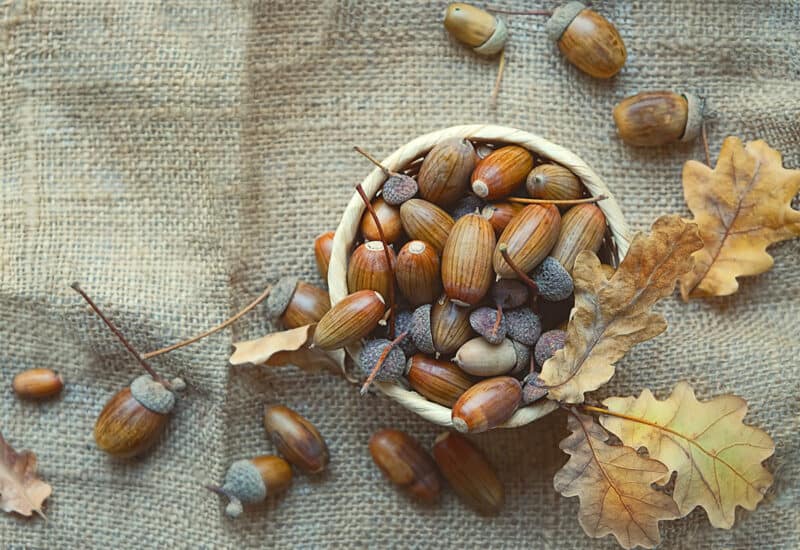
- Parts used: The entire nut, but smashed into pieces first. A hammer works well and the process can be super cathartic.
- Hues obtained: Dark brown with an iron mordant (make it a really strong dye bath), golden brown with tin
- Color fastness: Excellent
2. Alder (Alnus rugosa)
- Parts used: Leaves and bark
- Hues obtained: Leaves create a yellow dye with an alum mordant, olive green with copper sulfate, orange-yellow with tin. Bark creates a medium reddish brown with iron.
- Color fastness: Excellent, but can darken over time
3. Asters (Aster spp.)

- Parts used: Blossoms (fresh or dried)
- Hues obtained: If you’re using blue-violet asters, you’ll get yellowish-green with copper sulfate mixed with alum, yellow with alum on its own, and lemony yellow with tin. Pink asters will give you gray-green with copper sulfate and iron, and a pale yellowish beige with alum.
- Color fastness: Fairly good, but use a really strong, saturated dye bath
4. Beech (Fagus grandifolia)
- Parts used: Leaves
- Hues obtained: If you make a very strong bath with leaves and tin as a mordant, you’ll get a lovely rust color. They’ll also create a beautiful yellow with alum.
- Color fastness: Excellent
5. Birch (Betula spp.)
- Parts used: Leaves and inner bark (cambium)
- Hues obtained: The inner bark will give you a grayish purple-brown with iron, or orange with tin. Meanwhile, the leaves offer yellow and gold with alum and tin.
- Color fastness: Good
6. Black-Eyed Susans (Rudbeckia spp.)
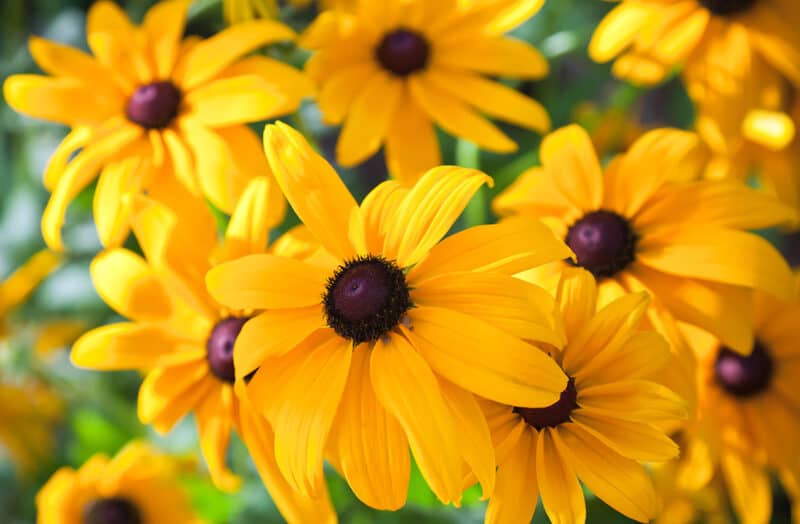
- Parts used: Flower heads and leaves
- Hues obtained: You’ll get a dark olive green with iron as a mordant, avocado with copper sulfate, and a sort of khaki hue with alum mixed with copper sulfate.
- Color fastness: Excellent
7. Burdock (Arctium lappa)
- Parts used: Leaves, chopped and simmered in a crock pot for 24 hours
- Hues obtained: Beige-tan with vinegar, intense yellow with tin, light yellow with alum, greenish yellow with alum mixed with iron.
- Color fastness: Fair to good, as long as you use a very strong dyebath
8. Cattails (Typha spp.)
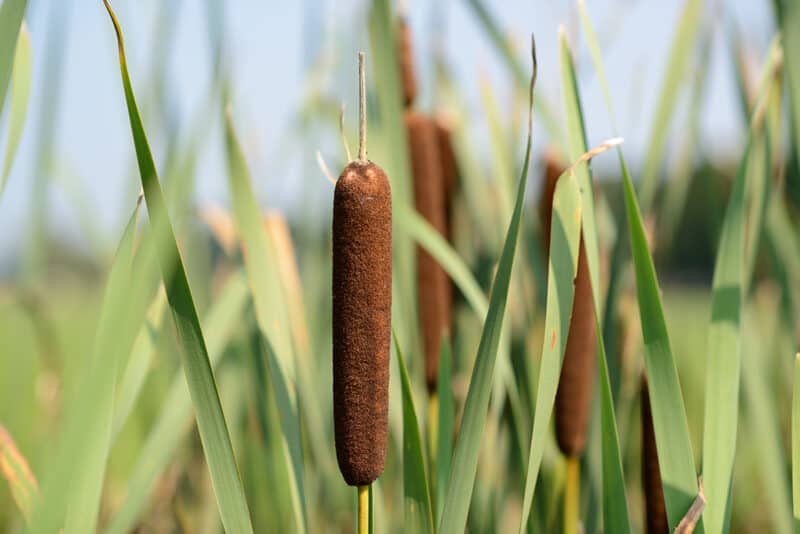
- Parts used: Young leaf shoots, brown female flower heads
- Hues obtained: Leaf shoots will give bright yellow-green with alum and copper sulfate, or intense yellow with tin. A triple-strength dyebath with the brown flowerheads will give you a warm beige with alum, or chocolate brown with iron.
- Color fastness: Excellent with leaves, moderate with the flowers
9. Cedar (Thuja occidentalis)
- Parts used: Leaves, soaked for 48-72 hours, then simmered for 3-4 hours
- Hues obtained: Golden yellow-orange with tin mordant, sunshine yellow with alum, light brown with iron.
- Color fastness: Magnificent, and the yarn will smell incredible
10. Chestnut (Castanea spp., OR horse chestnuts, which are Aesculus hippocastanum)
- Parts used: Green nut husks, and the nuts themselves, chopped up.
- Hues obtained: Husks will give you gray with iron, deep brown with chrome, and yellowish green with tin. Nuts will give a medium brownish tan hue with vinegar and alum combined.
- Color fastness: Good
11. Chicory (Cichorium intybus)
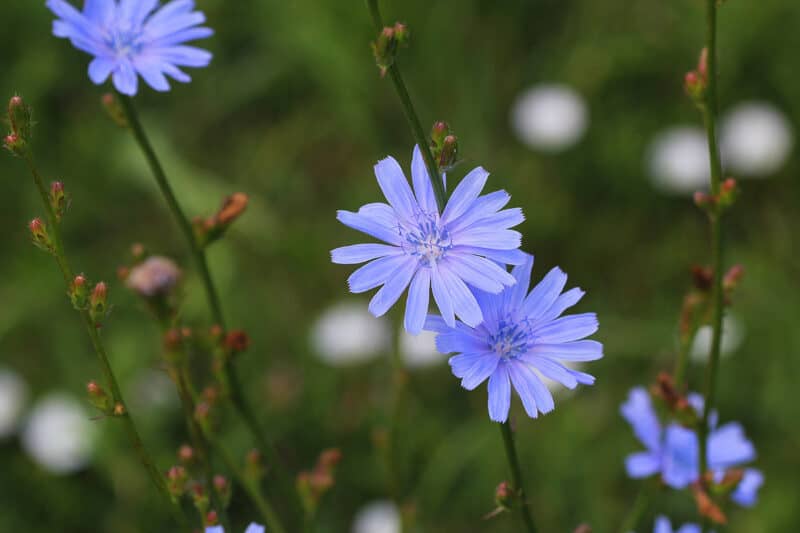
- Parts used: Roots that have been roasted, ground, and simmered in a crock pot for 48 hours.
- Hues obtained: Rich, dark brown with iron, light brown with alum, khaki with copper sulfate mixed with tin.
- Color fastness: Spectacular
12. Clover (Melilotus alba OR Trifolium pratense)
- Parts used: Flower heads, or the entire plant.
- Hues obtained: Red clover heads will yield a beautiful chartreuse hue with tin, while white clover plants will offer orange with tin, pale yellow with alum, and spring green with copper sulfate.
- Color fastness: Wonderful
13. Coltsfoot (Tussilago farfara)
- Parts used: Flowers
- Hues obtained: Bright gold with tin, lighter yellow with alum, various shades between if tin and alum are combined in different measures.
- Color fastness: Excellent
14. Daisies (Chrysanthemum leucanthemum)
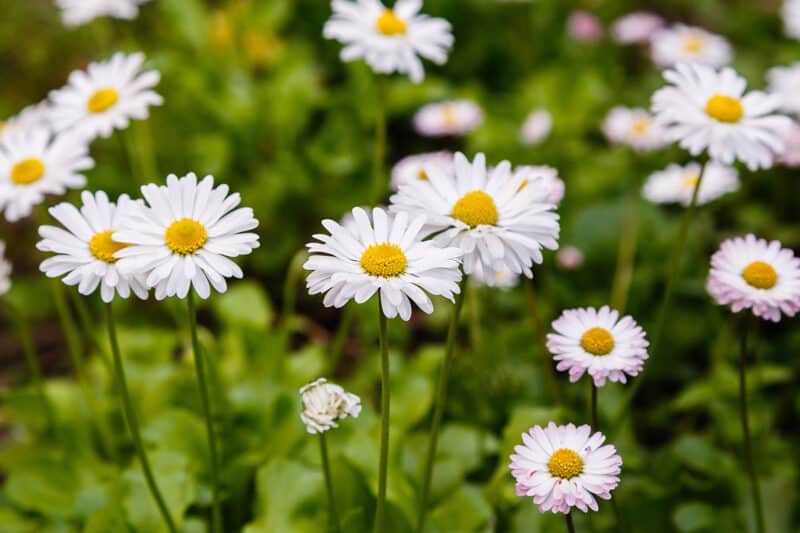
- Parts used: The entire plant, chopped up
- Hues obtained: A strong dyebath made of the whole plant will yield beige with vinegar, pale sage green with iron, bright spring green with tin, and chartreuse with baking soda.
- Color fastness: Spectacular
15. Dock (Rumex crispus)
- Parts used: Absolutely everything, from roots and stalks to leaves and seeds
- Hues obtained: Roots will give you tan with vinegar or khaki green with iron and copper sulfate; leaves and stalks will offer yellow with alum or yellowish-green with tin and copper sulfate.
- Color fastness: Excellent
16. Evening Primrose (Oenothera biennis)
- Parts used: Blossoms
- Hues obtained: Medium yellow with alum, bright yellow with tin
- Color fastness: Moderate
17. Fir (Abies balsamea)
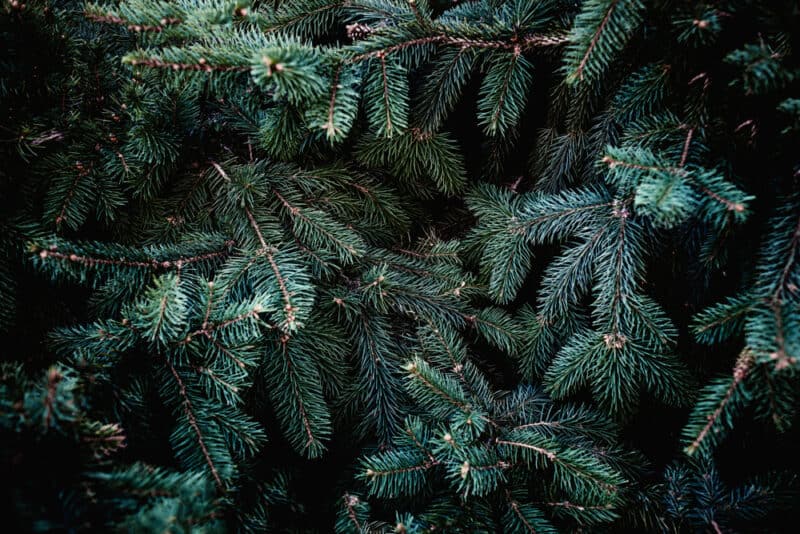
- Parts used: Tips from young branches
- Hues obtained: Bright gold with tin, pale gold with alum and vinegar
- Color fastness: Excellent
18. Goldenrod (Solidago officinalis)
- Parts used: Flowers, leaves, stalks. This is one of the best plants for beginners to use!
- Hues obtained: Use mature blooms to create pale yellow or yellow gold without any mordant, though you’ll get khaki or olive green if you process it in copper or brass pots. Use tin as a mordant with mature blooms for a stunning bronze hue. You’ll also get avocado or olive green if you use the leaves and stalks with iron and copper sulfate.
- Color fastness: Spectacular
19. Hawthorn (Crataegus spp.)
- Parts used: Mature fruits, crushed and simmered in a crock pot for 48 hours
- Hues obtained: Bright yellow-orange with alum bloomed in tin, khaki with iron, buttery dark yellow with alum.
- Color fastness: Excellent
20. Heal-All (Prunella vulgaris)
- Parts used: All aerial parts (blossoms, leaves, stems)
- Hues obtained: Fawn brown with copper sulfate, gray with iron, bright gold with tin, gentle yellow with alum.
- Color fastness: Excellent
21. Hemlock (Tsuga canadensis)
- Parts used: Branch tips
- Hues obtained: An extraordinarily beautiful golden yellow with tin or alum
- Color Fastness: Excellent
22. Horsetail (Equisetum spp.)
- Parts used: The green, frond-like foliage. Many people destroy horsetail as a weed, but it’s a useful plant to forage to dye yarn.
- Hues obtained: Soft sage green with alum and copper sulfate, pale green with alum, egg yolk yellow with tin, and gray-green with iron.
- Color Fastness: Excellent
23. Lamb’s Quarters (Chenopodium album)
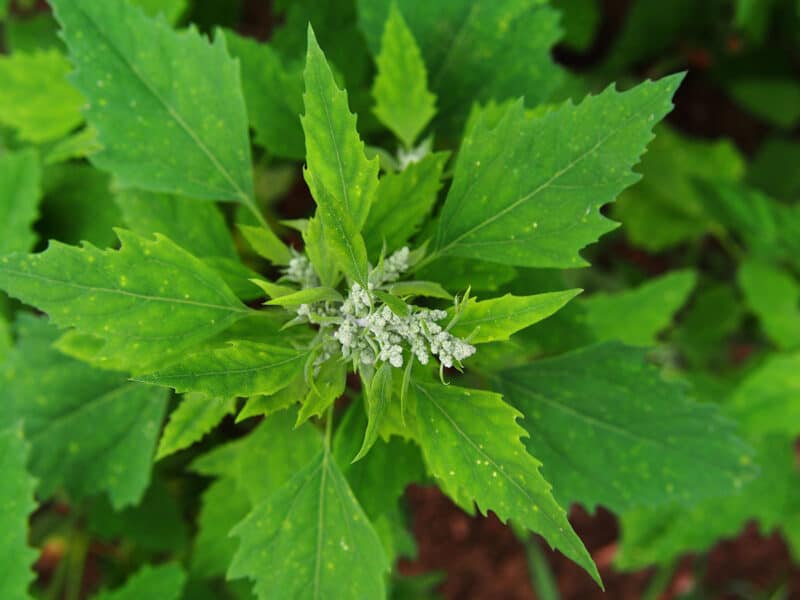
- Parts used: Leaves, stems
- Hues obtained: Pale green with copper sulfate, tan yellow with vinegar, gray with iron
- Color Fastness: Magnificent
24. Madder (Rubia tinctorum)
- Parts used: Roots
- Hues obtained: Various shades of red. Roots need to be pre-soaked in a mesh bag for 40 hours
- Fibers need to be scoured and pre-mordanted, then heated in the dye bath with the bag of madder root, and the temperature raised slowly to 180°F. Agitate the fibers gently, and don’t allow the mixture to boil. Deepen the red shade by adding some calcium carbonate (like a few tabs of Tums).
- Color Fastness: Excellent. Madder-dyed cloth was found in Tutankhamun’s tomb and was still strongly pigmented.
25. Mullein (Verbascum thapsus)
- Parts used: Leaves and flowering heads, though the leaves need to be shredded and soaked for 48-72 hours
- Hues obtained: Stunning soft gray with iron mordant, bronze with copper sulfate, sunshine yellow with tin, gentle yellow with alum.
- Color Fastness: Very good
26. Mustard (Brassica kaber)
- Parts used: The entire plant, chopped and soaked 24 hours. Forage this plant to dye your yarn rather than buying mustard at the store.
- Hues obtained: Gold with alum and tin, light yellow with alum, light yellowish green with copper sulfate
- Color Fastness: Excellent
27. Nettle (Urtica spp.)
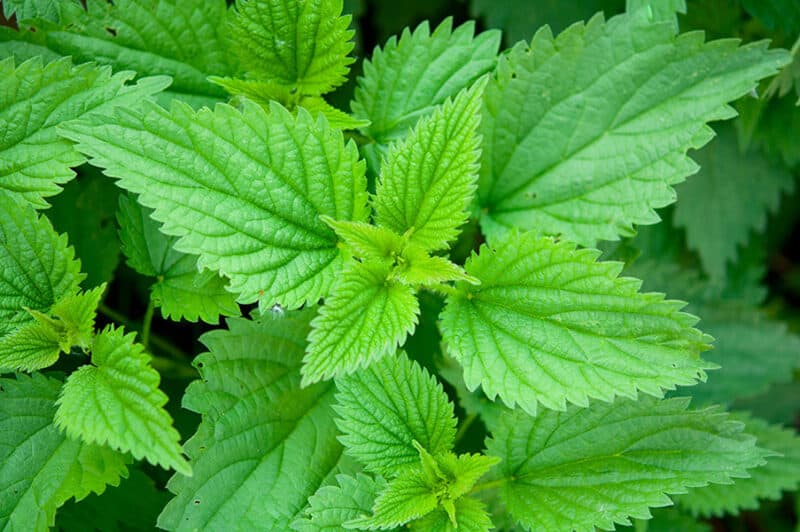
- Parts used: The entire plant, brought to a boil, allowed to cool, then soaked 48 hours as pre-processing before the dye bath.
- Hues obtained: Chartreuse with tin, gray-green with iron
- Color Fastness: Excellent
28. Onion (Allium cepa)
- Parts used: Skins. You can forage this plant to dye your yarn or purchase cultivated onions.
- Hues obtained: Olive green with iron, golden yellow with alum, orange with tin, lemon yellow with no mordant, dark yellow with vinegar, brass with salt.
- Color Fastness: Moderate, and last longer on cotton and linen than wool
29. Plantain (Plantago major)
- Parts used: Leaves
- Hues obtained: Pale green with alum, bronze with copper sulfate, gray with iron, grayish green with tin
- Color Fastness: Excellent
30. Rose (Rosa spp.)
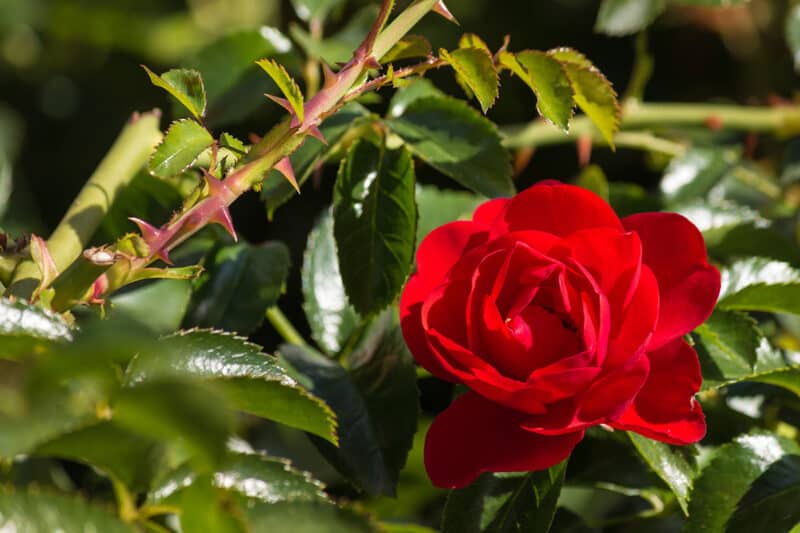
- Parts used: Petals
- Hues obtained: Yellow-orange with tin, yellow with alum, warm gray with iron
- Color Fastness: Good
31. Rowan (Sorbus spp.)
- Parts used: Leaves
- Hues obtained: Bright gold with tin, golen tan with alum, warm brown with iron
- Color Fastness: Excellent
32. St. John’s Wort (Hypericum spp.)
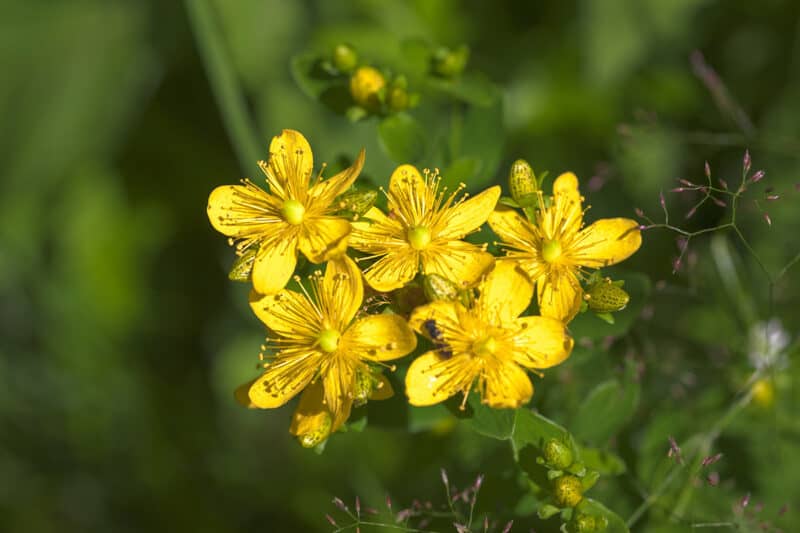
- Parts used: Flowering tops and leaves
- Hues obtained: The blossoms alone with give yellows and golds with vinegar or salt mordants, while the whole plant will offer bronze with copper sulfate.
- Color Fastness: Moderate
33. Spruce (Picea spp.)
- Parts used: Mature needles, cones. Spruces are a widely-available plant you can forage to dye yarn.
- Hues obtained: Fresh needles will yield gold with tin, and yellow with alum. Meanwhile, the gones will give you a reddish-brown with iron.
- Color Fastness: Excellent
34. Sumac (Rhus spp.)
- Parts used: Mature Berries
- Hues obtained: Burgundy with no mordant, warm gray with iron
- Color Fastness: Good with mordant, weak without
35. Sunflowers (Helianthus spp.)
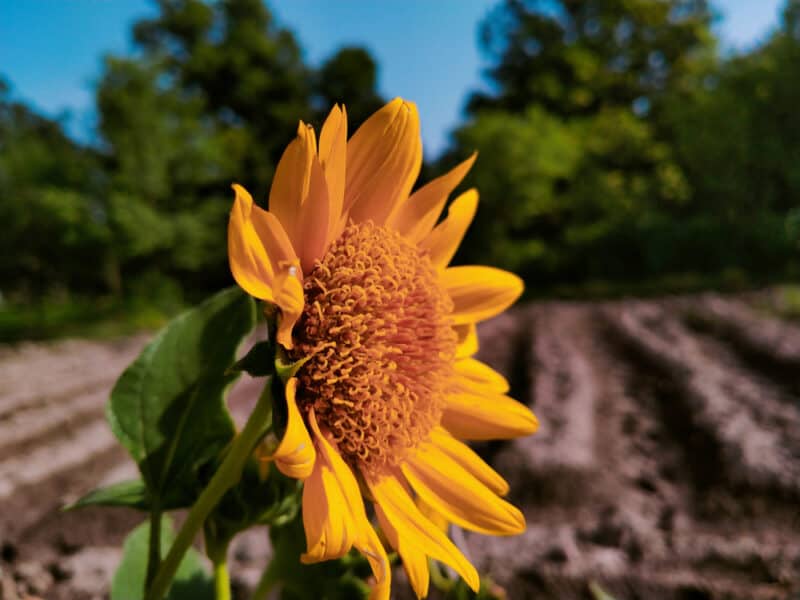
- Parts used: Flowers, stalks, leaves
- Hues obtained: Petals will yield pale yellow with alum and tin, while the leaves and stalks will give you bronze with copper sulfate or gray with iron.
- Color Fastness: Good
36. Violets (Viola spp.)
- Parts used: Entire plant
- Hues obtained: Sage green with iron, gold with copper sulfate, pale yellow with alum
- Color Fastness: Decent
37. Walnut (Juglans nigra)
- Parts used: Leaves
- Hues obtained: Intense yellow with tin, light yellow with alum
- Color Fastness: Excellent
38. Woad (Isatis tinctoria)
- Parts used: Fresh leaves need to be fermented, then treated with ammonia or concentrated urine
- Hues obtained: Various shades of soft blue, depending on how long the fibers sit in the dyebath
- Color Fastness: Good
39. Yarrow (Achillea millefolium)
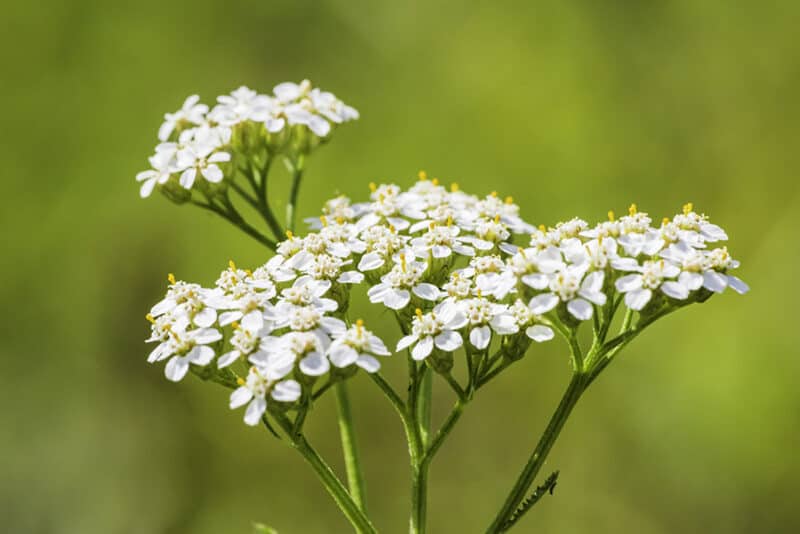
- Parts used: Flowering heads (the white plant)
- Hues obtained: Intense yellow with tin, lighter yellow with alum.
- Color Fastness: Magnificent. This is a long-lasting plant you can forage to dye yarn.
40. Yew (Taxus baccata)
- Parts used: Bark and heartwood, shaven and left to soak for 24-48 hours. Note that yew is VERY toxic, so be sure to wear gloves and a face mask when handling it, and dispose of the dyebath liquid safely.
- Hues obtained: Pre-mordant natural fiber with alum and simmer in a strong dyebath for 40-60 minutes. You’ll end up with a deep orange, rust, copper, or reddish pumpkin shade.
- Color Fastness: Very good.
A Few Notes on Foraging
You may have noticed that the vast majority of yarn plant dyes you can forage result in shades of yellow, green, and brown. As a result, you can well imagine how excited people were to discover new ways to create colorful yarns and fabrics. Intensely pigmented fibers were treasured, as the dyes to create them were costly and rare.
As mentioned before, the dye plants you forage for will depend entirely on your location. I might not be able to forage for woad where I am, but people in the U.K. will be able to find it plentifully. Similarly, you might be able to find indigo if you’re located in South America, and those in the Mediterranean might be lucky enough to find oodles of saffron crocuses to collect.
Please remember to harvest ethically and responsibly! Do research ahead of time to determine which of these plants may be endangered in your area. Never take the first plant you see, but ensure that there are plenty of others around to reproduce well in that location.
Also, be sure to do thorough research on the different mordants so you learn how to handle and use them safely. When dyeing fibers and fabrics with small children, only use salt, vinegar, and baking soda as mordants, just to be on the safe side.
